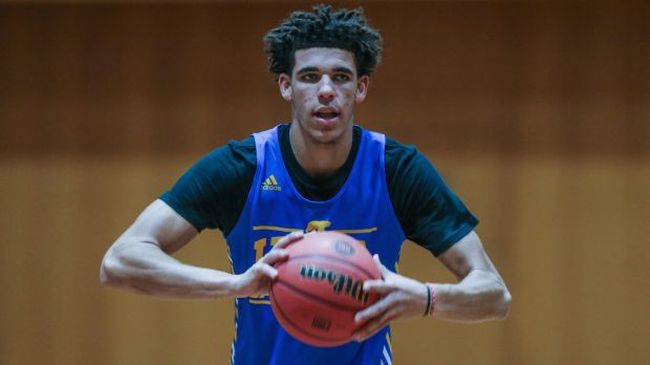Should We Care About Who Shares? Offensive Efficiency vs. Assist Rate
Posted by RJ Abeytia on January 21st, 2017If you grew up in the ’80s and you loved the game of basketball, Magic Johnson and Larry Bird changed the way you watched it, judged it and maybe even played it. One of the cornerstones of their impact was the elevation of the assist both as a highlight play and as a marker of a player’s impact. In today’s game, there is no better criteria for evaluation than efficiency. Assists make basketball the beautiful game, providing gasps in appreciation and awe at the sport played in its most fluid and selfless form. However, when it comes to college basketball — a game which has undergone a tectonic shift or 10 since the days of Bird and Magic — the question becomes, how valuable is the assist?

Lonzo Ball is one of many high assist/high efficiency standouts in the conference this season. (Getty)
To answer that question, the first place to start is by cross-checking team offensive efficiency with assist rate. Here is how the Pac-12 looks.
| Offensive Efficiency | Assist Rate |
| 1. Oregon | Oregon |
| 2. UCLA | Arizona |
| 3. Arizona | UCLA |
| 4. Arizona State | Washington State |
| 5. Utah | Stanford |
| 6. Colorado | Oregon State |
| 7. California | USC |
| 8. Washington | Colorado |
| 9. Washington State | Utah |
| 10. Stanford | Arizona State |
| 11. USC | California |
| 12. Oregon State | Washington |
The eyeball test clearly shows a strong correlation between Pac-12 teams in terms of their assist rates and efficient offenses. There’s no room at the top without great ball movement, but the line between offensive success and assists gets somewhat obfuscated at the bottom. Stanford, Oregon State and USC all rank among the top half (okay, USC is seventh) in assist rate, yet each team still struggles offensively. Conversely, Arizona State has a proficient offense this season without the services of a great assist rate. If assist rate turns out to be an important metric, we would expect the Sun Devils to regress offensively while the Cardinal, Trojans and Beavers should ascend. If we simply resign ourselves to this unscientific snapshot, it’s fair to say there’s a light correlation between offensive efficiency and assist rate, but the two metrics are not collinear.
The mitigating factor, of course, is talent. Stanford and Oregon State simply haven’t made enough baskets, period, so in their cases assist rate matters more because they don’t have a surplus of players who can consistently challenge a defense. The story is different for a team like USC. The Trojans have good talent but not enough cohesion, and thus their high tempo of play hasn’t translated to a large number of assisted baskets. At the top of the chart is the best of both worlds. UCLA, Oregon and Arizona have the most talented rosters in the league, so to combine their great talent with team cohesion is optimal. All three of those teams could still score a lot of points were they to play with less cohesion, but not at the same proficiency with which they do by playing together. A team like Arizona State, on the other hand, depends on its guards to create offense — a situation which often ends up against the shot clock and failing to produce assisted baskets.
Arizona was the most efficient offense last season but finished sixth in assist rate, while Oregon, the second-most efficient offense in the conference, finished 11th. In 2014-15, Arizona again led the league in offensive efficiency but finished only eighth in assist rate. Utah was the second-most efficient offense and the Utes finished second in assist rate. Here is the instructive point from all this data: Some teams are talented enough to score without a system that emphasizes ball and player movement, while others are not. Assists are certainly beautiful, but they’re not as necessary as talent. What we’re seeing in the Pac-12 this season is a confluence of both efficiency and passing at the top. The three most talented offenses are sharing the ball, and it’s produced three very potent scoring teams. For less-talented teams across the Pac-12, how you find offensive success matters more, and sharing the ball is an increasingly vital place to start









































